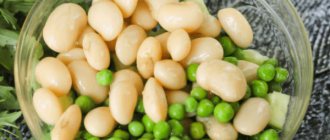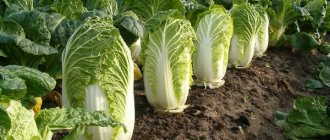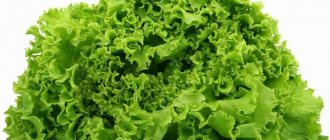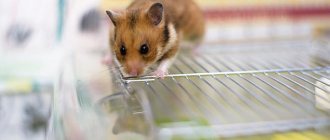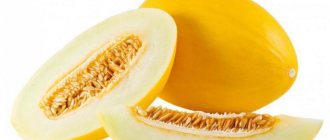But maybe it’s still possible, if you’re careful
The hamster is a very curious animal and puts almost everything into its mouth. The teeth need to be ground down with something. So, if a pomegranate seed falls into his paws, he will eat it without hesitation. But, as we have already said, not everything that is useful for people is also useful for hamsters.
Yes, pomegranate is the king of fruits. We will modestly keep silent about Thai durian, where can you find it here? By the way, I wonder if a hamster can have durian?
Stop. We got distracted. Let's continue. The problem with pomegranate is that it is very rich in all kinds of vitamins and microelements. It is in them that its danger for the hamster lies.
For reference: pomegranate contains about 15 amino acids, five of which are essential for the body. Also, it is rich in vitamins K, C, B9 and B6 and minerals (potassium, copper, phosphorus). With all this richness, it is a low-calorie fruit. There are only 72 kilocalories in 100 grams.
So why is it so harmful to our furry pets:
- Tannins found in the fetal crust slow down the peristalsis of the intestinal tract, which leads to constipation. Considering the size of the animal and its rapid metabolism, this constipation could cost him his life. Also, the peel of the fruit contains some alkaloids, which can simply kill the poor fellow.
- The fat contained in pomegranate seeds puts a lot of stress on the liver.
- A high content of vitamins will lead to hypervitaminosis (to put it simply - too much), which is also not good for poor Khoma.
- Too much acidity in pomegranate juice is bad for the digestive system.
- Don't forget about common allergies. In the wild, hamsters are unlikely to eat pomegranate, so there is no immunity to new substances in the animal’s body. If you see that your pet is often itching, his eyes are red and tears are flowing, then most likely the poor thing is suffering from allergies or poisoning. Urgently remember what you fed and try not to give this food again.
Once again: even one pomegranate seed can lead to serious consequences, including the death of your pet.
Interesting fact: Syrian hamsters are less susceptible to pomegranate, since they still have a chance to try it in the wild. But it’s still not worth giving a Syrian a pomegranate on purpose. It’s better not to even show it to the Djungarians at all.
Rules for feeding a hamster with grapes
The main thing is that you must understand that grapes contain more water (juice) than nutritional fiber. Therefore, it will not satisfy your hunger, but it will easily reduce your thirst.
And if you decide to introduce this juicy food into your hamster’s diet, then you need to follow some rules that will help your pet get the maximum benefits and nutrients from grapes:
- The berries should be small in size: it is better to choose quiche or currant;
- Pay special attention to the ripeness of the fetus. It must be fully ripe, because unripe berries contain acid, which is completely contraindicated for hamsters.
- Always choose seedless and white grapes - again, the rule is in favor of seedless varieties.
- The frequency of feeding grapes is no more than 2 berries 1-2 times a week.
Be careful to ensure that your hamster eats the berries and does not hide them in secluded places. The thriftiness of these animals can play a cruel joke on them, because grapes quickly spoil and consuming such a product can cause poisoning in the animal.
Do not give your animal berries again if he has already eaten them during the day. The exception to this rule is only for those hamsters who have an acute lack of vitamin B5. However, it is worth paying attention to other vitamin-rich foods that contain less sucrose and fructose. For example, corn, potatoes, peaches and apricots.
If your pet has diabetes, then eating grapes is completely contraindicated for him.
Important! Don't give your hamster more grapes than he should. Of course, it’s nice to see what a good appetite your pet has. But think about the consequences! Responsibility for the health and life of a pet lies entirely on the shoulders of its owner.
Can hamsters eat grape seeds?
The answer to this question is clear - no. The seeds found in grape fruits are strictly prohibited for hamsters to eat. Therefore, before feeding your rodent a sweet fruit, make sure to remove all the seeds from the fruit, and only then give it to your hamster.
Can hamsters be given green grapes?
It's worth clarifying here. If the word “green” means a white grape variety, then such berries will only benefit the hamster. However, if “green” is unripe fruit, then the answer is categorical - no!
Is it possible to feed a rodent blue grapes?
This type of grape will not harm your hamster in any way. But it is worth remembering that white varieties are still healthier.
Well, at least a little...
You can try a drop. Moreover, 1 drop of juice is exactly one drop. Not more. In winter, the amount of vitamin C in the hamster’s body decreases. Fresh grass and vegetables are more difficult to get than in summer. But pomegranate is always full of these vitamins. Even in winter. If you have decided, at any cost, to expand your pet’s diet and provide him with vitamin supplements, here is one piece of advice:
Experts suggest diluting 2 drops of juice in half a glass of clean water. Just don’t give all this half a glass to the hamster at once. Let him drink plain water. This way you can compensate for the lack of vitamins in your hamster.
This advice should be used only in extreme cases at your own peril and risk. The best solution would be to feed your hamster regular vegetables and fruits that are not capable of harming your pet’s health.
Can hamsters eat grapes?
Can hamsters eat grapes, watermelon or other treats? This is one of the first questions that fluffy owners have when summer comes. Do not confuse domestic hamsters with their wild counterparts. You can’t kill such a hamster with arsenic or other poisons, but a domestic one is choosy about regular food.
It’s hard to resist feeding your “pet” some vegetables or fruits in the summer. But it’s worth knowing that not all food from the master’s table can be given to a rodent.
For those who do not want to delve into the essence of the problem, we will answer right away - hamsters can eat grapes, but in small quantities and subject to certain rules.
The first thing to remember is that grapes have a lot of juice, so it is easier for them to quench thirst than hunger.
When feeding a rodent grapes, the following precautions should be observed:
- the grape should be small in size;
- the fruit must be fully ripe, since unripe grapes are sour, and acid is contraindicated for hamsters;
- choose white seedless varieties;
- You should feed your hamster grapes one berry no more than twice a week;
- Make sure that the hamster does not hide the berry, but eats it whole. Hamsters are by nature thrifty animals; your pet can hide a berry in its pantry, where after a while the grape itself will spoil and spoil the food lying there. This will most likely lead to poisoning of your pet after eating such products.
Is it possible to give a hamster pomegranate?
It would seem that the answer to the question “What to feed a hamster?” very simple. However, in practice, feeding hamsters can raise many questions among inexperienced owners regarding whether this or that product can be given to their pet.
Hamsters must have a balanced diet
. This means that it will include not only ready-made dry food, which forms the basis of the diet, but also other products. In particular, you can give your hamster the following foods.
Cereals, nuts and seeds
. From cereals you can give wheat, oats, barley, buckwheat, rolled oats, lentils. They are given in dry form; Porridges cooked in water without salt or seasonings are fed to sick and weak animals. Nuts you can give are peanuts, hazelnuts, cashews, and walnuts. You can also give your hamster melon, pumpkin, sunflower and sesame seeds.
Vegetables, fruits and berries
. Hamsters' diet must include fresh fruits, berries and vegetables - a source of vitamins and moisture. Among the berries you can give currants, gooseberries, strawberries, pitted cherries, and blueberries. From fruits - apple, pear, apricot, melon, peach, banana, grapes, plum (in small quantities). Hamsters also enjoy eating dried fruits - dried apples and pears, raisins, dried apricots, banana chips.
Most vegetables are given to your hamster raw.
. You can treat your pet to pumpkin, carrots, bell peppers, tomatoes, cucumbers, radishes, radishes, zucchini, zucchini, beets, squash, turnips, green beans, fresh corn, Chinese cabbage, broccoli, fresh peas, young peas in pods. Occasionally and in small quantities, you can give cauliflower, peeled rose hips and celery. Some vegetables (pumpkin, carrots, beets and peas) can also be given boiled; they are cooked for a short time and without salt.
Greens, leaves and sprouts
. Hamsters' food may also include oat, wheat, bamboo and alfalfa sprouts. From greens you can give salad, dill, parsley, plantain leaves, dandelion leaves, nettles, clover. Hamsters also eat leaves of fruit trees (apple, cherry, pear), as well as other deciduous tree varieties (ash, beech, maple, willow, poplar, oak, birch, walnut).
All vegetables, fruits and berries that you give your hamster must be fresh, not overripe or spoiled
. Plants for a hamster should be collected away from roads and industrial enterprises. Any plant food should be washed thoroughly before giving it to your hamster.
Hamsters' diet also includes a protein component.
. This can be boiled chicken or low-fat boiled fish without seasoning and salt, low-fat fermented milk products (yogurt without additives and sugar, cottage cheese, kefir, all with a fat content of no more than 1%), boiled chicken or quail egg. Less often they give live food: butterflies, grasshoppers, mealworms, earthworms, dried gammarus. Any live food must be purchased at a pet store! Protein products are given to the hamster 2-3 times a week (of course, not all at once, but just one).
There are a number of foods that are not recommended to be included in a hamster's diet.
. They cannot be called strictly prohibited, but there is a high risk that they will cause irreparable damage to the health of your pet. These include cheese (especially fatty and salty varieties), acorns, Brazil nuts, persimmons, white bread, potatoes, as well as ready-made food for other rodents and birds.
Finally, there are foods that should absolutely not be given to hamsters.
. These include:
- salt, spices, sugar, both in pure form and as part of other products;
- fried, fatty, smoked food, any food from your table;
- exotic fruits (including pineapples, kiwi, avocado, pomegranate, citrus fruits), watermelon;
- fruit juices;
Proper nutrition for hamsters is one of the guarantees of their health. At the same time, it is very important to know which foods you can give your hamster and which you absolutely cannot.
Is it possible to feed hamsters apples?
Fruits should not form the basis of a pet's diet. You should not feed your hamster only an apple; the food should be varied and include everything it needs.
The fruit contains almost all types of B vitamins, minerals, calcium, iron, magnesium, phosphorus and potassium, which have a positive effect on the cardiovascular system. The treat will be useful for small hamsters and adults. The product will increase your pet's hemoglobin, renew the blood, improve immunity and intestinal function.
You should not give apples in large quantities because:
- They contain sugar, large amounts of it are harmful. Increasing the level threatens the hamster with diseases, including obesity.
- In addition to the previous point, they contain malic acid, which can disrupt the functioning of the gastrointestinal tract.
- If you cut it into small pieces, the animal can hide some of it. Then the remains will begin to rot, the process will spread to other products, which will cause poisoning in the animal.
There are features of introducing fruits into the diet. The owner must pay close attention to the amount of product. There should not be too many of them; it is impossible to replace the main diet of a rodent with fruits alone. There are certain groups of animals for which this product is prohibited; consumption may lead to bad consequences. These include young animals up to one month old, elderly and pregnant animals.
Reasons for banning pomegranate
First you need to figure out what it is. Pomegranate is an exotic fruit that contains calcium, vitamins, iron, phosphorus, and magnesium. For humans this is a treasure trove of useful substances, but for a hamster the product is dangerous.
The body cannot cope with the acidity contained in the fruit and can cause severe stomach pain. A large amount of vitamins also leads to hypervitaminosis, and bones can damage an already weak digestive system. You should not give pomegranate bark, so that your pet does not suffer from severe constipation. Pomegranate seeds contain fat, which adversely affects the functioning of the animal’s liver, and the essential oils of the fruit cause an allergy attack.
Results
If you want to risk treating your animal with persimmon, then you need to choose low-sweet varieties. This product is suitable for a hamster if it suffers from intestinal upset. In other cases, a small piece of persimmon without peel can be given as a treat once or twice a month.
Did you like the article? Share with friends: [supsystic-social-sharing id=”1"]
- Related Posts
- Can hamsters have potatoes?
- Can hamsters eat buckwheat?
- Can hamsters have apples?
« Previous entry
Effects of Pomegranate on Hamster Species
Recently, Djungarian hamsters have been gaining popularity. These simple rodents quickly won the hearts of breeders thanks to their attractive colors and active lifestyle. You can meet them in Siberia. Hamsters living in the wild feed on insects, grass, and seeds. They have never tried pomegranate and are unfamiliar with its taste. A new fruit can cause a negative reaction, even death.
The Syrian hamster lives in Syria and enjoys a hot climate. The hamster is distinguished by its cleanliness and unpretentiousness. Breeders of such rodents note that this is an ideal pet; it eats more food. The diet includes: nuts, insects, seeds, herbs, cereals, vegetables and fruits. The Syrian hamster's body is stronger, and it is easier to cope with new foods.
Despite their different habitats, the body structure of rodents is the same. Therefore, the reaction to pomegranate and the consequences after it are almost identical.
LiveInternetLiveInternet
—Quote book
Learning to paint gingerbread cookies❄❄❄ To make icing, you need.
Another simple recipe for preparing eggplants for the winter is to combine them with...
Clover is popularly known by many names: trefoil, honey stalk, eryngium. .
—Categories
- 100 beauty recipes (53)
- Health (11)
- facial care (9)
- hairdresser (7)
- beautiful legs (4)
- hand care (1)
- Repair (18)
- serious crafts (8)
- Dacha (6)
- Easter (3)
- Interior (2)
- might come in handy (45)
- tasty treats (268)
- fast and tasty (34)
- cook in pots (8)
- Lenten dishes (2)
- from dough (61)
- for a picnic (17)
- dumplings (5)
- appetizer salads (49)
- salt and pickle (13)
- cakes (15)
- Embroidery (5)
- knitting (266)
- adults (8)
- kids (6)
- knitting for girls (25)
- knitting for teenagers (25)
- For yourself (12)
- useful tips (9)
- belongings (22)
- for the soul (109)
- cinema (15)
- books (4)
- crochet for beginners (17)
- New Year's (56)
- New Year's menu (19)
- Handicrafts (14)
- festive (3)
- By city and country (2)
- usefulness (60)
- useful tips (17)
- pleasantness (34)
- handicrafts (193)
- Little things in life (26)
- decoupage (17)
- For dolls (22)
- quilling (7)
- alterations (14)
- crafts (47)
- we sew ourselves (63)
- adults (6)
- for home (6)
- teenagers (2)
- Prichindals (14)
—Search by diary
—Subscription by e-mail
—Interests
-Statistics
Should you give your pet pomegranate?
In winter, the rodent's body begins to experience a lack of vitamin C. Pomegranate can increase the level to normal. You should not fanatically give your rodent fruit. You just need to add a couple of drops of pomegranate juice to 100 grams of water and mix thoroughly. This method can only raise vitamin levels in an emergency situation. The best way to replenish the body with vitamins are vegetables and fruits that are familiar to everyone. They have a beneficial effect on the health of the tiny creature.
A hamster's body is tens of times smaller than a human's, so you should not give pomegranate even in small quantities. To take care of your pet, remove pomegranate from the diet, thereby prolonging your pet's life.
What foods make up the natural diet
The hamster is not picky. In nature, he loves to eat grain crops: buckwheat, wheat, rye, corn, as well as legumes: peas and beans. Even tree roots, green juicy grass, fruits, and berry branches are used as food for rodents. Animals store a lot of things in their burrows: seeds and nuts. In gardens, animals can damage potatoes and other vegetables. A small pet needs protein, so it can eat small crustaceans, mollusks or insects. Carrion also occasionally serves as food for the rodent.
What to feed dzhungariks. List of "dos" and "don'ts"
Friday, March 08, 2013 23:35 + to quote book
It is no secret that Djungarian hamsters often eat everything that comes under their nose. At the same time, the pet will not always be able to understand whether the chosen treat is harmful to it or not. Therefore, responsibility for the nutrition of the Djungarian hamster lies, of course, with its owner, who must know what to pamper his beloved rodent with and what should be completely excluded from his diet. I hope this list will help you with this.
YOU CAN : 1. Dry food mixture is the main food for the Djungarian hamster. 2. Cereals :
3. Seeds:
4. Nuts:
5. Sprouts:
6. Greenery:
- clover;
- nettle;
- dandelion leaves;
- plantain leaves;
- parsley;
- salad;
- dill.
7. Vegetables:
- eggplant;
- bell pepper;
- broccoli;
- peas (young in pods);
- zucchini;
- Chinese cabbage;
- corn (fresh or dried);
- carrot;
- cucumber;
- squash;
- tomato (not winter);
- radish;
- radish;
- turnip;
- beet;
- celery;
- green beans;
- pumpkin;
- cauliflower;
- zucchini.
8. Fruits and berries:
9. Dried fruits:
- banana chips;
- raisin;
- dried apricots;
- dried pears;
- dried apples.
10. Branches of deciduous and fruit trees:
Do not forget that Djungarian hamsters should eat protein food several times a week.
11. Chicken meat (boiled without salt and spices). 12. Boiled egg :
13. Yogurt without additives and sugar (no more than 1% fat). 14. Kefir (no more than 1% fat). 15. Cottage cheese (no more than 1% fat). 16. Shrimp (boiled and peeled). 17. Earthworms, mealworms, grasshoppers, dried gammarus (only purchased at a pet store).
Proper nutrition - what you can and cannot feed hamsters at home
Pet stores offer owners of Djungarian and other types of hamsters industrially produced food that is specially adapted and safe. It is important to pay attention when choosing food packaging in a store, so that it is intended specifically for a hamster, which should be marked accordingly on the packaging. Additionally, you can consult with a sales specialist about which food is best. Ready-made mixtures contain a whole list of food products: vitamins, grains, vegetable and fruit additives, nuts, seeds.
You can give bread, but not too often, better in winter. It is preferable to feed grain bread - dried, in small portions.
To give or not to give grapes to a hamster
So can a hamster eat grapes?
It would be best to limit your hamster's consumption of this product to one or two berries per week.
After all, the hamster will eat all the food offered, but it will not benefit him. All responsibility for this lies with its owner. You can give grapes as much as he will eat and admire his appetite. And think about the consequences. After all, the animal will hide the remaining berries in the cage, the berries will spoil, and the outcome from this can be extremely unpleasant.
Can hamsters eat grape seeds? The answer is clear - no, grape seeds cannot be eaten by a hamster. Therefore, when choosing a berry for your pet, make sure that the grapes do not contain seeds.
Can hamsters eat green grapes? If you mean white grape varieties, then yes, you can give such fruits to a rodent, adhering to the rules described above. If you mean unripe fruits, then it is better for your pet to refrain from such a treat.
Can hamsters eat blue grapes? Yes, blue grape varieties are possible, it is best to pay attention to “kishmish”, this is a sweet grape variety that does not contain seeds.
In our article, we tried to answer the question “can hamsters eat grapes” in the most detailed way and hope that our recommendations will help you in caring for your furry friend.
And in our previous article we talked about whether hamsters can eat watermelon.
Useful materials:
- Medium-sized dogs Australian Shepherd or Aussie Australian Cattle Dog or Australian Heeler Australian Kelpie Austrian Hound American…
- Corella parrot sings How to teach a budgerigar to dance? According to statistics, almost half of all pet lovers give...
- Determine the breed of a dog Dog Breed Determiner What does this application do? Determines the breed of a dog from a photograph using the camera of your device...
- Dog language translation Dog Translator Simulator Do you want to communicate with your pet by saying “woof” and trust that the dog will hear...
What to eat for the animal to wear down its teeth (twigs, pumpkin, carrots)
An excess of any green food can lead to diarrhea, so it is important to observe moderation when feeding and do not give parsley to pregnant and lactating females. Branches of fruit crops, linden, raspberries, rose hips are necessary for grinding teeth. The branches are washed, doused with boiling water and placed in a cage. If you don’t give the hamster twigs to wear down his teeth, he will do it on the bars of the cage or gnaw on everything he can reach, possibly biting the owner.
The rodent will select grains from the spikelets like its counterparts in the natural environment.
The food mixture from the store is poor in vegetables and fruits, so you need to give your pet seasonal crops - pumpkin, zucchini, apples, pears, sweet peppers and cucumbers. Vegetables are peeled and offered in small portions.
Occasionally you can please your gourmet with raisins or a slice of dried apple. But excess sugar and sweet fruits are unacceptable.
What else can you feed your hamster in the summer?
Let's start with what animals should not eat from the summer harvest - these are sweet fruits (pears, peaches, watermelon, melon), citrus fruits, raspberries (have a strong laxative effect on the body of rodents).
If we consider fruits, then in addition to grapes, the hamster can be given sour plums, apricots, cherries, cherries, strawberries, strawberries. All this can be given to a rodent, but in strictly limited quantities.
You can also give a banana, but be careful not to let your hamster take the leftovers into his pantry. This is very dangerous, because bananas spoil very quickly.
Also in the summer it is necessary to include greens and grass in the daily diet of your pet hamster. For example, dandelion leaves, beet and carrot tops, lettuce and celery, plantain and any greens from your personal garden.
It is better not to buy greens (dill, parsley, lettuce, etc.) in the store, because they are grown using fertilizers and chemicals that can negatively affect the well-being of your pet.
Excess green food in a rodent's diet can lead to gastrointestinal upset and diarrhea. Therefore, carefully monitor the amount and percentage of greens in the animal’s diet.
What can you give a hamster to wear down its teeth?
In order for the hamster to wear down its teeth and at the same time receive the necessary vitamins, it is necessary to give it branches of fruit trees, firm young carrots, pumpkin, zucchini, apples and cucumber. And finally, what else can you feed your hamster at home?
We have already reviewed most of the products above; let’s add another important aspect to this list – animal proteins. In order for the animal to receive them in the required quantity, you need to give him cottage cheese, eggs, chicken meat or lean lean beef, boned fish once a week.
Also, specialized pet stores sell cockroaches, grasshoppers and worms that rodents feed on in the wild; these can also be given to your pet.
Feed your pets correctly, do not forget that their health and well-being, as well as the number of years they live, depend on proper and balanced nutrition.
Reasons for banning pomegranate
First you need to figure out what it is. Pomegranate is an exotic fruit that contains calcium, vitamins, iron, phosphorus, and magnesium. For humans this is a treasure trove of useful substances, but for a hamster the product is dangerous.
The body cannot cope with the acidity contained in the fruit and can cause severe stomach pain. A large amount of vitamins also leads to hypervitaminosis, and bones can damage an already weak digestive system. You should not give pomegranate bark, so that your pet does not suffer from severe constipation. Pomegranate seeds contain fat, which adversely affects the functioning of the animal’s liver, and the essential oils of the fruit cause an allergy attack.
Effects of Pomegranate on Hamster Species
Recently, Djungarian hamsters have been gaining popularity. These simple rodents quickly won the hearts of breeders thanks to their attractive colors and active lifestyle. You can meet them in Siberia. Hamsters living in the wild feed on insects, grass, and seeds. They have never tried pomegranate and are unfamiliar with its taste. A new fruit can cause a negative reaction, even death.
The Syrian hamster lives in Syria and enjoys a hot climate. The hamster is distinguished by its cleanliness and unpretentiousness. Breeders of such rodents note that this is an ideal pet; it eats more food. The diet includes: nuts, insects, seeds, herbs, cereals, vegetables and fruits. The Syrian hamster's body is stronger, and it is easier to cope with new foods.
Despite their different habitats, the body structure of rodents is the same. Therefore, the reaction to pomegranate and the consequences after it are almost identical.
Should you give your pet pomegranate?
In winter, the rodent's body begins to experience a lack of vitamin C. Pomegranate can increase the level to normal. You should not fanatically give your rodent fruit. You just need to add a couple of drops of pomegranate juice to 100 grams of water and mix thoroughly. This method can only raise vitamin levels in an emergency situation. The best way to replenish the body with vitamins are vegetables and fruits that are familiar to everyone. They have a beneficial effect on the health of the tiny creature.
A hamster's body is tens of times smaller than a human's, so you should not give pomegranate even in small quantities. To take care of your pet, remove pomegranate from the diet, thereby prolonging your pet's life.
Sources:
https://homyachek.ru/vopros-otvet/mozhno-li-homyaku-granat-ili-granatovyj-sok https://colibris62bethune.org/other/mozhno-li-homyaku-granat.html https://homjakam. ru/pitanie/mozhno-li-homyakam-granat
